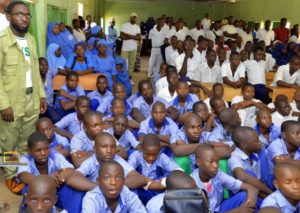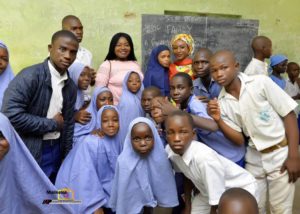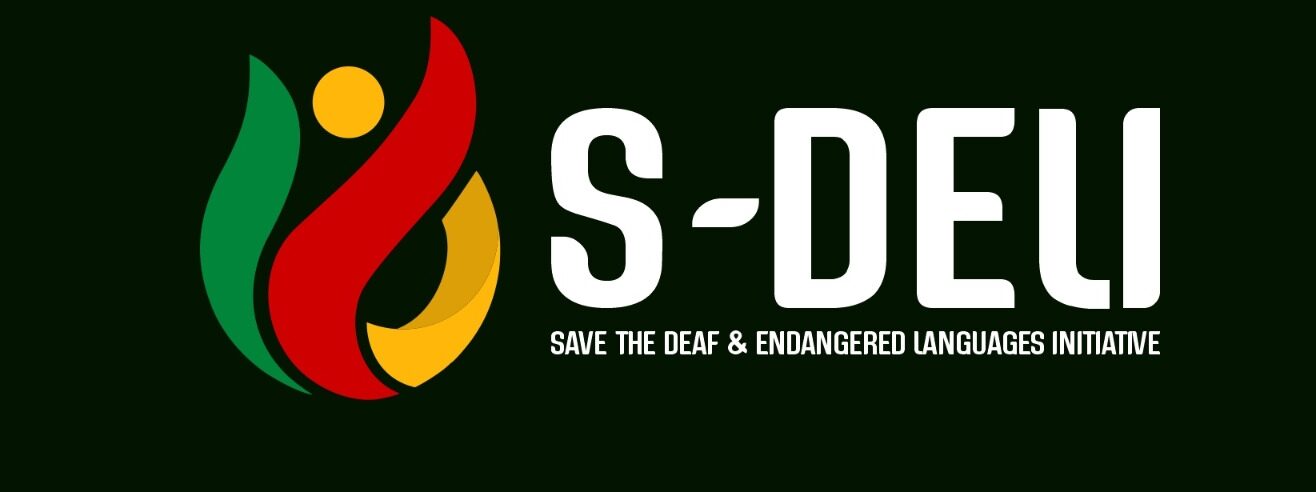

In my first article on this matter, I tried to shed light on some of the realities that face a typical Nigerian deaf child, which I’m beginning to wonder how the signed Disability Act is going to take care of. Those discrimination, marginalization and stigmatization realities are in the homes, in the communities, in the schools, in the churches, in the offices, if there was ever one for the Deaf. We have continued to assert in all our works (for instance, Asonye, 2017(b); 2017(d); Asonye & Emma-Asonye, 2018, etc.), that about 75% of deafness in children age 0 to 5 in Nigeria is possibly caused by various preventable health challenges – infections, measles, meningitis, fever attacks, name it! But we have hardly been asked about the rest of the 25% that is allegedly a product of genetic change.
Whether genetic or preventable, fact remains that hearing loss in children constitutes a major number to the population of people that would become deaf the rest of their lives from childhood. This population is at the center of vulnerability in our country – in fact, among the most vulnerable. But the Nigerian deaf population largely consists of two groups, not necessarily Deaf and Hard of Hearing (D/HoH) as in America, but those that became deaf as children (Deaf-as-Children, DaC or prelingual), and those that became deaf as adults (Deaf-as-Adult, DaA or post-lingual). Now that the Disability Discrimination Bill is signed, my assignment in this episode is to discuss how this bill affects these two groups as I keep wondering how this Bill would judge discrimination, eliminate stigmatization and aid total Deaf inclusion.
It is interesting to know that many post-lingual deaf adults were not just once hearing, but that they grew up in the hearing community, once had all their relationships among the hearing, with little or no knowledge about the Deaf until they became deaf. This population of deaf people in Nigeria often find it difficult to adjust into deaf life, learn signed language and get enculturated into the Deaf world. Some of them get caught up in the middle, while some never would identify with the deaf community. We have seen some deaf people in this third group as they struggle to fit in. As much as I am careful to avoid any possibility of hasty generalization (since our studies are yet to cover this extent), it is not an overstatement to say that, if there ever was a job for the Deaf, it is most likely given to a deaf person with speech. If you ever heard about a thriving deaf scholar or entrepreneur, it is most likely a deaf person with speech. When we talk about signed language as an index of Deaf culture, as a human right of deaf people, it hardly rings bell with the deaf people that live their lives in the hearing world. Now that our Disability Bill is signed, how will it deal with this discrimination that breathes among the discriminated, the marginalization that hunts the marginalized?
I do not do this article with the intention to criticize, judge or condemn any deaf person that has speech, that became deaf as adult or that is doing well in between the deaf and hearing world, rather I decided to touch these salient but silent issues to raise the plights of the most vulnerable among us, to talk about the group in our midst that we don’t talk about in our daily lives, to lend speech to the speechless and voice to the voiceless, especially now that our Disability Discrimination Bill is signed into law, I intend to bring us to the knowledge that there’s an urgent need for a conscious advocacy for the rights of the marginalized group in our society.
As a Speech and Hearing Scientist, I’ve had the privilege of working with children with ASD, ADHD and are nonverbal and I’ve had the privilege of appreciating their communication difficulties. While some lack the skills to make syntactically and semantically acceptable utterances, others may lack the skills to express and respond to emotions and social cues, yet, most times, they want to communicate, but they can’t, they know what to communicate, but don’t know how to. In the absence of a professional guide and intervention, such frustration often generates violence, destruction of objects and self-harm. If this is a life picture of a child with speech impairment, imagine the frustration of a child with speech and hearing loss in the absence of signed language, in the midst of communication barrier.
Finally, on this episode, as our Disability Discrimination Bill has been signed by the president, I hope the Federal Ministry of Education will deem it necessary to incorporate the use of Indigenous Nigerian Sign Language for Deaf education into the National Policy on Special Needs Education, and to find reason to adequately train and retrain teachers of deaf children. Despite how many times we may have say it and how many times we will still say it, there’s no overstating the fact that Nigerian Deaf schools are grossly understaffed and grossly overstaffed with teachers that have little or not Deaf Ed training. It is marginalization of the highest level! In our documentation of the School Directory, we have documented up to 119 Schools for the Deaf in Nigeria. You may be alarmed to know the population of signing teachers in those schools and the population of deaf teachers compared to the hearing teachers. The discrimination, the marginalization is obvious, and I wonder how the Disability will take care of this.
I choose to close with the famous words of Martin Luther King Jr. “I have a dream that one day this nation (Nigeria) will rise up[sic] and live out the true meaning of its creed: we hold these truths to be self-evident, that all men are created equal,” (both deaf and hearing).
References
Asonye, E. (2017b, Sept. 3). What’s this fuss about Nigerian Sign Language? [Blog post].
Retrieved from: https://s-deli.org/whats-fuss-nigerian-sign-language/
Asonye, E. I. (2017d, Oct. 19). 2030 Sustainable Development Goals: What does it mean to African deaf communities? [Blogpost]. Retrieved from: https://www.britishcouncil.com.sn/en/programmes/language-development-conference-2017/blog/emmanuel-asonye
Asonye, E. & Emma-Asonye, E. (2018). Collaborative research on Nigerian Sign Language. Paper presented at the 92nd Linguistics Society of America (LSA) Annual Meeting, Salt-Lake City, Utah, Jan 4-7, 2018.
2 Comments
Add comment Cancel reply
You must be logged in to post a comment.

[…] In my first article on this matter, I tried to shed light on some of the realities that face a typical Nigerian deaf child, which I’m beginning to wonder how the signed Disability Act is going to take care of. Those discrimination, marginalization and stigmatization realities are in the homes, in the communities, in the schools, in the churches, in the offices, if there was ever one for the Deaf. We have continued to assert in all our works (for instance, Asonye, 2017(b); 2017(d); Asonye & Emma-Asonye, 2018, etc.), that about 75% of deafness in children age 0 to 5 in Nigeria is possibly caused by various preventable health challenges – infections, measles, meningitis, fever attacks, name it! But we have hardly been asked about the rest of the 25% that is allegedly a product of genetic change. […]
[…] https://www.s-deli.org/now-that-the-disability-bill-is-signed-episode-2/ S-DELI Blog page. […]